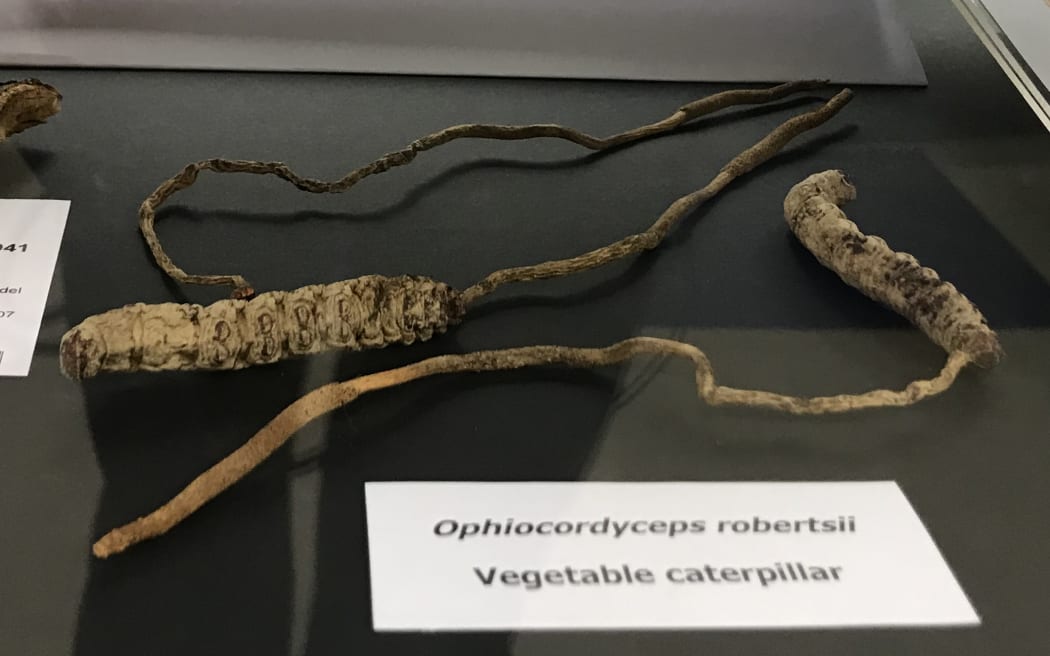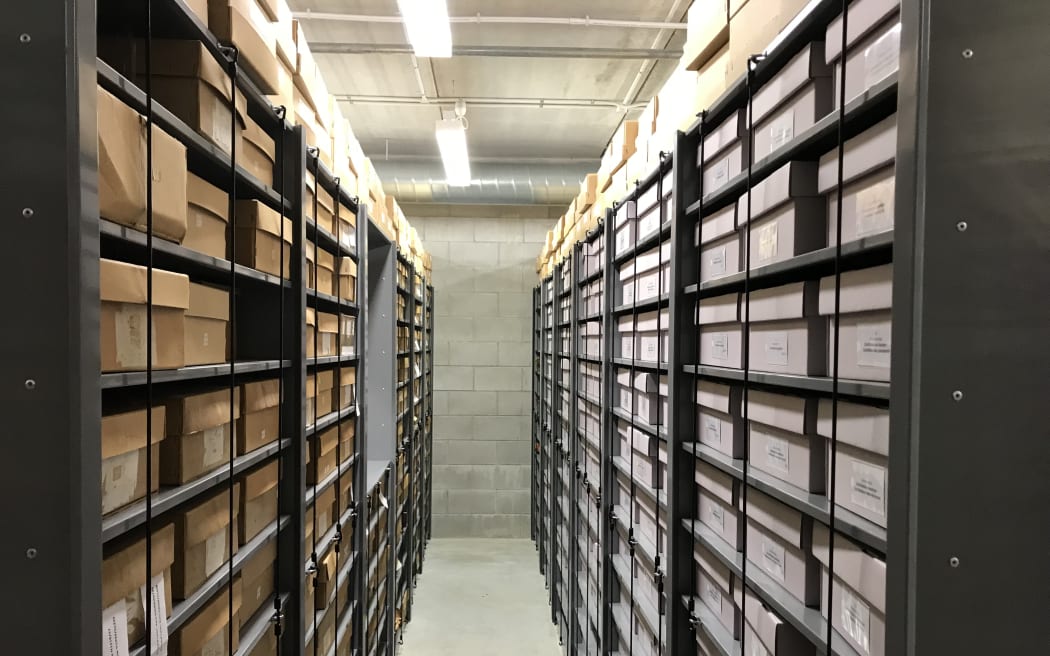The New Zealand Fungarium has a library feel – a quiet and calm room, with just the hum of air conditioning as a backing track. On display in a glass fronted cabinet when you walk in is a small group of mummified caterpillars on a stick, like weird larval lollipops.

Vegetable caterpillar fungi Photo: RNZ
Follow Our Changing World on Apple Podcasts, Spotify, Stitcher, iHeartRADIO, Google Podcasts, RadioPublic or wherever you listen to your podcasts.
Ingesting a spore of a particular native fungus causes the caterpillar to change its behaviour, explains Dr Mahajabeen Padamsee, curator of the New Zealand Fungarium, "It goes and buries itself with its head pointing up, and the fungus grows from the top of the head," she says.
These ‘vegetable caterpillars’ are part of more than100,000 specimens in this collection, a store of dried fungi housed in the Manaaki Whenua – Landcare Research building in the suburb of St Johns in Auckland.
A large climate-controlled room hosts row upon row of shelves, stacked with large cardboard boxes, themselves filled with envelopes containing dried fungi wrapped in tissue. Some of the specimens are just too large for envelopes, and rest instead in larger boxes or are wrapped in plastic bags to trap their spores.

New Zealand Fungarium stacks - each box contains fungi specimens Photo: RNZ
Adrienne Stanton, the collection manager, is responsible for keeping the specimens safe and in good condition, as well as facilitating specimen loans to researchers. Alongside a huge number of native New Zealand fungi, the collection also contains many specimens from across the Pacific.
The New Zealand Fungarium is used for two main functions – investigating fungal biodiversity and helping biosecurity efforts. It grows each year by about 2,000 specimens. Some are given to the collection by researchers, but many are gathered during the annual Fungal Foray – a multi-day fungi treasure hunt held in a new area each year with the Fungal Network of New Zealand.
To learn more:
- Listen to the full Our Changing World episode.
- Our Changing World tagged along on the 23rd Fungal Foray in 2009.
- Vegetable caterpillars were discussed on Afternoons with Jesse Mulligan as Critter of the Week in 2017.


